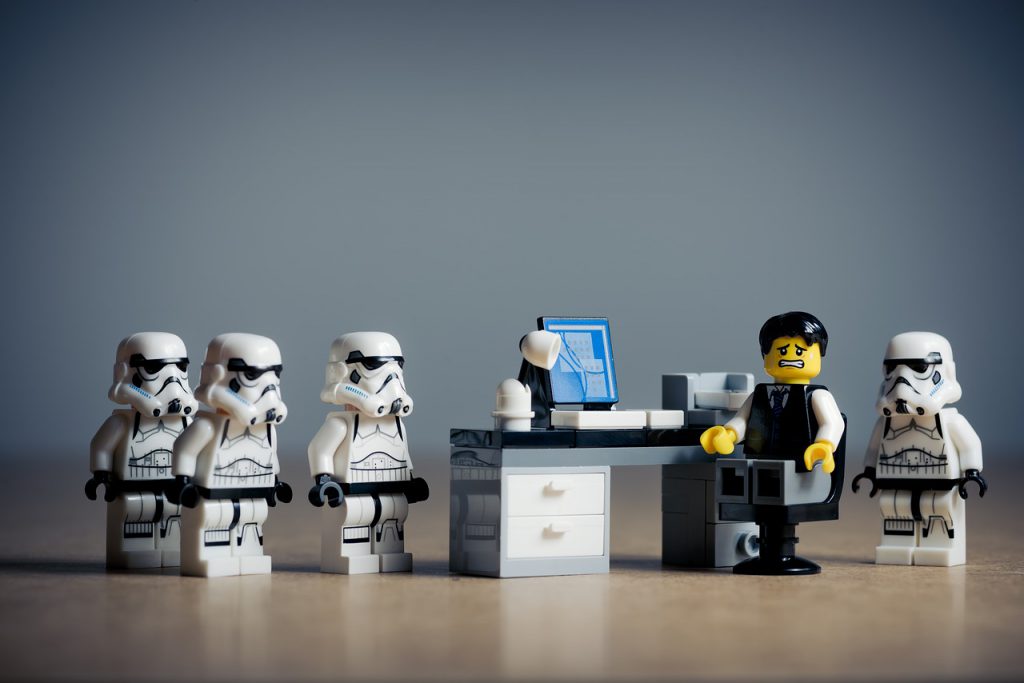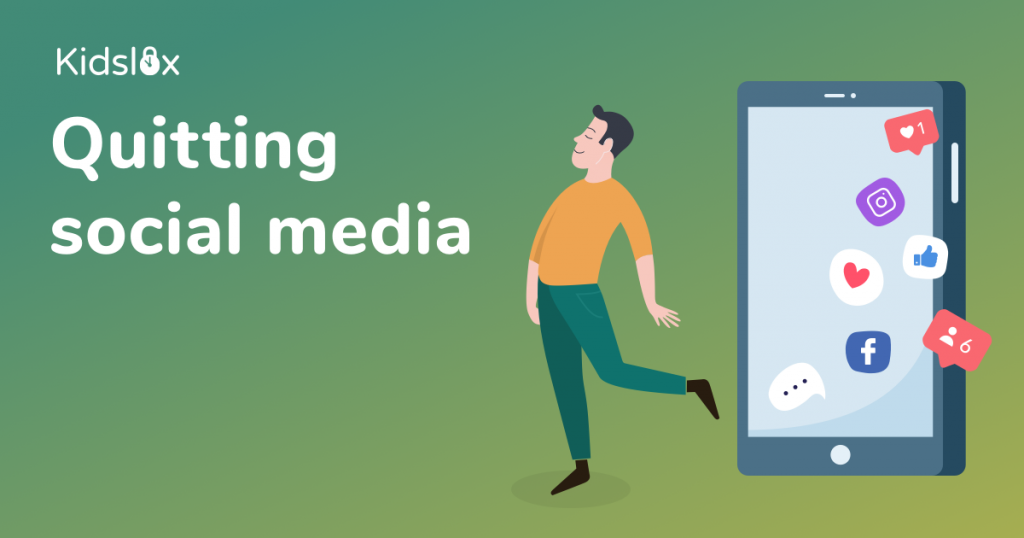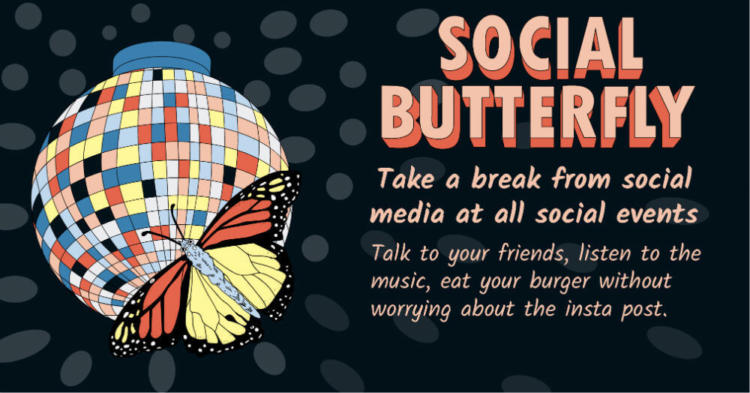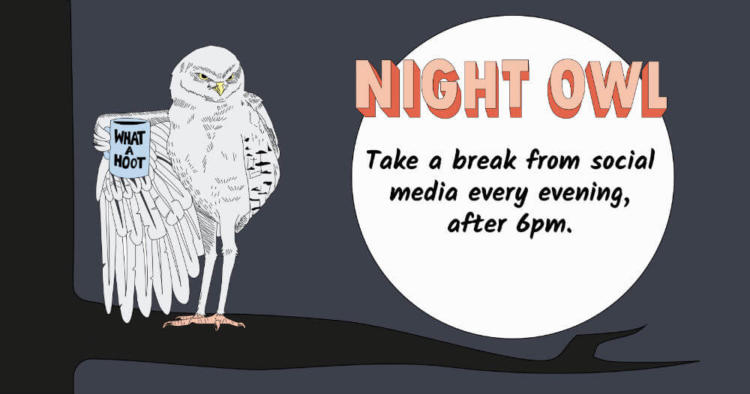The role of social media has grown to an extraordinary size in modern life. Many of us are concerned that it might have too big a role in the life of our kids. Though if we’re honest with ourselves it may well be just as problematic in our own lives. I can’t count the number of times someone’s been ranting to me about their kids’ online habits while indulging in many of the same behaviours themselves!
Even so, we feel an extra sense of responsibility to do right by our kids and keep them safe. We’re only too aware of their vulnerability, naivety and lack of maturity. It’s not that we think social media is something evil, to be avoided at all costs. We’re just aware of how it’s use can get out of hand and start to soak up all of one’s time. More than that, recent research showing how social media affects young people’s mental health has us alarmed too.
Some social media is better than others
It’s an unavoidable fact that social media and other online activities have become an essential part of life for most developing young people. Yet, not all social networks influence children equally. The Royal Society for Public Health recently released a report on the impact of social media on young people’s mental health and wellbeing. About 1500 teens took part in the study and shared their experience with social media and the impact of that media on their mental health.
It is interesting to note that vast majority of young people were pretty sure that social media can harm your mental health. And that Instagram and Snapchat lead the list of most harmful applications, while YouTube seems to be the most sensitive to people’s mental wellbeing.
In defence of social media
The same report that warns of the mental health risks of social media also brought up some positive moments. Instagram, for instance, was described as having a positive effect on both self-expression and self-identity in young people.
While this inevitably comes with downsides (we’ll get to those), social media shouldn’t be dismissed off hand. There’s plenty of positive potential available too:
- they give a window into other people’s experiences and opinions, allowing teens a broader picture of the world around them
- they create a platform for expressing your own views
- management of your own personal brand on social media is a skill very much transferable to the modern workplace
- enables young people to connect and communicate with each other
Social media: friend or foe?
Social media certainly offers us and our kids a lot of benefits and growth opportunities but it also contain some risks. Keep in mind the following:
- kids still need our guidance in the digital world as much as in the real one
- they still need boundaries to help them understand the limits of the safe and the acceptable and grow in self discipline and responsibility
- we can support our kids by encouraging creative, active social media engagement.
Whether they get a lot of likes, followers, views, or other “success” indicators or not, we need to continue supporting them such that they don’t look to their social media accounts as a primary source of validation.

Dangerous mental health signs
The Royal Society for Public Health report suggests that “social media may be fuelling a mental health crisis”. This would be especially felt among young people, a much higher percentage of whom are active social media users. What does Instagram and Snapchat’s poor outcome in this survey tell us? You might infer that social media experiences which focus on images are the most likely to lead to anxiety, fear of missing out, feelings of inadequacy and other mental health consequences.
Depression and anxiety
Some of the negative effects that were noted after spending large amounts of time on social media included:
- feeling bad about their body image (especially true for girls)
- feeling more and more dissatisfied with themselves when they see somebody presenting a much more interesting or picture perfect life (despite the fact that what is presented is very carefully selected, and can even be completely fake)
- an escalated feeling of social anxiety
- experience of cyberbullying
- experience sleep disorders which lead to problems coping with everyday routine
- having a fear of missing out and being disconnected with the rest of the world when they are away from the screen
- feeling lonely.

Cyberbullying on social media
There are some risks of social networking that we as parents should be aware of. Cyberbullying on social media is one of those risks. And our children and teenagers are an especially at-risk group.
Cyberbullying happens when one person repeatedly and intentionally offends, threatens, harasses and mistreats another person using online services and electronic devices like computers, tablets or cell phones. This might include:
- making fun of someone
- excluding someone from online conversations and other online activities
- public humiliation through online posting of private information or damaging photos and videos
- hacking an account to post inappropriate things on the account holders behalf
- trolling or provoking to respond using online insults
- creating fake online profiles for deceptive purposes (predators often use this form to target kids online)
- and other forms of derogation.
One of the problems with cyberbullying is that mean and humiliating information spreads very quickly across the web and it’s difficult if not impossible to stop and delete it once it’s there.
Cyberbullying facts
The number of kids who are victims of some type of cyberbullying has grown massively over the last decade and much more attention has started to focus on this issue now. According to research done in 2016 by the Cyberbullying Research Center:
- Over 1/3 of all the kids aged 12-17 have been cyberbullied at least once in their lifetime and more than 16 per cent directly identified themselves as cyberbullying victims.
- About 70 per cent said that somebody spread rumors about them online.
- And 4 out of 5 of those who have been cyberbullied on social media said that negative comments were made about them online.
- Also about 1/3 of kids and teens admitted that they bullied their peers online at least once in their life, making rude comments about them or forcing them to do something he or she didn’t want to do.
- Most cyberbullying and internet harassment is done via private messages, in chat rooms or via e-mail. Some applications have extra potential for enabling cyberbullies.
Cyberbullying effect on children
Cyberbullying is done online but its effect is very real in the offline world. Many areas of children’s lives can suffer from it, especially when it’s done over and over again.
- There is a direct connection between cyberbullying and in-person bullying at school. Over 80 per cent of the students who experienced cyberbullying within the 30 days of the survey said that they have been also bullied at school at the same time; and many students who admitted to bullying others at school also said that they bullied them online.
- A study done by Florida Atlantic University found that roughly 64 per cent of students who faced cyberbullying also reported that it seriously affected their ability to learn and feel safe at school.
- Cyberbullying has a very negative impact on kids’ and teens’ motivation and self esteem.
- Interestingly, teens who were engaged in cyberbullying, said that this would most likely increase their popularity among the peers. This false life pattern makes the tendency of cyberbullying among kids and teens even more heartbreaking.
- CNN reported a significant increase in the number of children admitted to hospitals for attempted suicide or expressing suicidal thoughts within the last decade. Much of this rise is attributed to an increase of cyberbullying on social media.
Social media manipulation
Apart from cyberbullying, there are other potential dangers concealed by social networks. Social media is one of the most wide-spread forms of communication today and therefore it is one of the potentially strongest platforms for manipulation. Since we have so much news and information being posted online every day it is hard to figure out what is really important and deserves our attention. Today different media resources often repost stories from other sources (including social media like Facebook or Twitter). And usually the stories that get most likes and comments are at the top of the list, and they are the stories that are most likely to be reposted.
So if you can upvote particular stories or tweets there is much bigger chance that they will be reposted by others and reproduced on other platforms. They will be seen by a much greater audience and will form opinions and social trends in different areas. Though they might not be the most important in reality.
And for social media or internet search services that have a pretty good database of people’s searches and requests, (i.e. they know what people are looking for and thinking about), there is a big temptation to serve people exactly what they want to hear, (which is more likely to drive engagement) rather than unbiased news or a selection of viewpoints.
Main psychological techniques of social media manipulation
Today many governments, big companies and other monied organisations are able to leverage advances in the fields of human behaviour and psychology to effectively manipulate social media users through the content they produce.
Here are some of the key social media manipulation methods.
The majority of social media sites allow publishing of news immediately, without proofreading. On the one hand, this is expected, we understand “social media” to mean a free, open platform where users can post more or less whatever they want. On the other hand, fake news can spread online very fast, even uncontrollably and have a strong social or economic effect on whole nations. And to delete occurrences of fake news from a network seems to be a very hard or even impossible task.
“Problem-solution” technique. The idea behind this method is to create an imaginary problem and cause a particular response to it among media users (fear, anger, etc.). Then the solution is suggested and most users gladly receive it or even demand it. No need to specify that the “solution” is the very thing the manipulators want.
Distraction of attention. One of the main elements of social manipulation and control is to distract people’s attention from important problems or unpopular government decisions through constant saturation of social media and news platforms with insignificant stories and messages.
“Step-by-step” technique. If you want to make some idea popular it is enough to introduce it day by day for a long enough period of time. If you see the same product advertisement in your Facebook feed, links to it on different websites and its commercial at the middle of your favorite video on YouTube there is a good chance that one day you will “decide” that you need it. How can you be sure whether your decision to get it is unbiased?
Make a very strong emotional appeal. This is a classic method to prevent people from analyzing a situation and making reasonable decisions. Many false “charities” send social media users heart-wrenching photos or stories of wounded kids or homeless people who actually don’t exist. Though the stories are sometimes reminiscent of fiction novels this does not stop gullible readers from sending them money or reposting those stories to their social media friends. The waters are muddied even further through the presence of many genuine appeals too.
Other social media manipulation tricks
Some forms of social media manipulation are less grandiose, but even simple tricks can be surprisingly effective.
Using different colors. Multiple studies and tests had shown that some colors are more psychologically attractive to different groups of people. If you use that information you can increase the likelihood that users will press the button you want and like, dislike or ignore your posts.
Check-boxes, online forms, and quizzes. By clicking some of them you might sign away your privacy even without knowing it. Different internet companies might try to use this information to influence your consumer choices or even your voting decisions.
Can social media manipulation be resisted?
I am not sure if we can be absolutely free from the influence of manipulative content but we certainly can do some things to minimize negative effects of social media manipulation on us.
- Check the source of the information. If you are not sure do not allow posting it in your news feed and do not repost it.
- Think critically and ask questions when you doubt the content or the source of the information. Discuss the information with people you trust.
- Use digital solutions to block fake news and suspicious content on your devices and especially the devices of your children.
- Ignore fake news. Sometimes this is just the best decision you can make.
- Be ready to confront false news or manipulative information. Sometimes you cannot just ignore it and have to resist the lie with the truth.
Remember, when we see the manipulation, we all have the choice to resist or to accept it. Make the right choice and enjoy the benefits of social media without fear of manipulation.
10 Tips to Make a Social Media a Better Place

Here are some tips and ideas to help both us and our kids make social media a better place for all:
- Remember that people on social media are real people! This might seem obvious, and it is, but when all our interaction with someone happens on a screen, it becomes easy to forget. We start to focus on the things people say online in an exaggerated way and forget that they also have feelings, moods, ambitions, a sense of humour and so on.
- Don’t forget that social media is a public space and even sitting home at your computer you are not really alone. This is both liberating and cautionary. On the one hand, this sort of networking offers a real chance to connect with others, whether that’s people you already know or strangers who share your interests. At the same time, it means that you should treat publicly visible interactions on social media as carefully as you would your behaviour in any other public space (perhaps even more so as your behaviour on social media stays on permanent record).
- As a practical upshot of that 2nd point: don’t write a public message to someone that you wouldn’t be willing to say to their face in a public setting. This seems pretty self explanatory. Just remember that words have consequences.
- Or in other words: be polite and clear! Even if you wouldn’t normally think of yourself as an especially polite person, be aware that in a written comment or conversation subtleties of intonation, body language and humour are lost in most cases. As a result, it’s easy to offend or mislead others by accident. That’s why politeness and clarity are an essential baseline for online conduct.
- Set up your profile on social networks with a keen awareness of who can see your personal information. This “tip” gets mentioned all the time in news items on online security and is even touted by the social networks themselves to try and show that they’ve got your interests at heart. How many of us actually do it though? Go onto your social accounts now and check what info. is publicly visible (and do the same with your kids).
- Think deliberately about what it is you hope to get out of being on a social media platform. Rather than letting yourself be carried along by the flow of what everyone else is doing, try to use social media intentionally.
- Be aware of social media’s impact on your own mood. If you find yourself getting upset or depressed when you look at other people’s posts or when your own posts don’t receive the attention you want, this might be a warning sign to a) take a good look at your expectations, b) change the way you use social media or c) take a break from social media.
- Work out the social norms of the platforms you’re on (talk to someone already on the platform, search on Google or watch other users for a while before you start posting) and unless you have a good reason to break those norms, stick to them. This might mean not asking for likes, or not sending friend requests to people you don’t know and so on. There are a lot of these sort of unspoken rules around. It’s not completely terrible to break them, just a bit of a social faux pas. Sometimes you might have a good reason to break those rules, but if you don’t I’d suggest following them in the same way that you’d usually follow social norms in non-virtual situations.
- Be patient and tolerant. Even if you’ve got your own social media game down to an art, there are plenty of people who haven’t. Especially younger users who are just getting started on these platforms. Give them the benefit of the doubt.
- Don’t underestimate or misuse your influence in social media. Whether your “friends” or “followers” number in the tens or in the tens of thousands, someone see’s the things you post and they’re influenced by it in some way.
All these tips and ideas might be summed up by saying, be careful, be yourself and stay human on social media.
Quitting social media challenge

“It’s constant. I go straight to it when I get up. I feel like I have to keep up with what everyone is talking about. I feel like I’m a slave to my phone,” – Rianna Parry, 15, a big fan of Instagram and Snapchat said.
A lot of teenagers feel that they are addicted to their phones or get distracted by sticking on social media. Scrolling the feeds for nothing, waiting for notifications, counting “likes” and clicking the Snapchat button again and again just not to feel lonely or bored. Not only children and teenagers but also parents are at risk to be hooked on social media.
According to the Royal Society for Public Health survey, 56% of young people say they want to give up social media due to their concerns about harming mental health.
Social network tools are designed to be addictive. There is a whole industry of consultants and psychologists, who are helping designers punch the right buttons in our brains. Companies call these individuals – attention engineers, who borrow principles from Las Vegas casino gambling, to try to make products as addictive as possible. Snapchat, Facebook, Instagram and others grab our attention appealing to the kind of non-rational, automatic, impulsive parts of us. As a result, we do keep coming back for more, and can’t quit.
“Everyone – including social media giants – need to take responsibility to tackle the “mental health epidemic in the next generation,”
– Claire Murdoch, NHS England’s national director for mental health said.
Here is our guide on how to “take back control” and give up social media, at least for a month. However, if you don’t really want to quit social media, you may just try to see the difference.
Turkey or owl? Set up your own motivation
To deal with your addictiveness, you should make a list of benefits of quitting social media. First of all, you realized that you have a problem and you can’t waste your time on it anymore. Health and well-being are the priorities to think about. For instance, look at some positive sides, which scientists say about life without SM:
- Better sleep
- Better concentration (the ability to focus intensely)
- The ability to produce things that are rare and valuable
- More active life
- More self-control and productivity
- Happier everyday life
If you are parents, maybe the most powerful motivation would be your kids. It’s a good reason to quit bad digital habits to set an example for your children. On the top of this, you’ll have more free time to spend with your family.
What can trigger quitting social media completely is a short break. For example, you may participate at Scroll Free September 2018 challenge to support good mental health and wellbeing. This is an initiative started by the Royal Society for Public Health. And before you start you should choose a plan that you’ll go for:
Prepare for quitting
- Save all necessary information that you need from social accounts: contacts, photos, important links for work or your family time etc.
- Before deactivating your accounts, give a chance to your followers to know that you leave and give them the alternatives to reach you. Leave your number and email, and tell them to give you a call or meet face-to-face if they need.
- Be prepared that you are someone who could be forgotten. Probably, some of your friends will disappear from your life if you don’t have Instagram or Facebook, because they aren’t so close to you. But don’t worry, because true friends will still be there for you.
- Ask your friends to join your scroll free challenge. Together it will be easier to achieve the aim.
Out of sight out of mind?
Finally, delete the social media apps from your gadgets. If you don’t plan to quit your accounts for a long time, you may turn off all notifications for each app you wish to detox from.
Deleting the shortcut to social media apps from the home screen may also help while staying Scroll Free. To resist returning to scroll, you could also try leaving your phone at home occasionally, or taking a ‘dumb’ phone that doesn’t support social media.
However, we shouldn’t go to extremes. It must be quitting for a good point. We must learn the lesson “how to take control of machines.” Parents and kids have to learn the way of managing their screen time. To bury all gadgets is not the option. Keep the balance between VR and real world. It could be much easier to put schedules on your devices by using Kidslox. This is the easiest way to set up social media restrictions on phones or tablets, set up time limits for children and protect them from online risks.
Enjoy your family-time and new hobbies
After you deactivate online temptations, you’ll have more time to do something for your family or self-development. Everybody has a hobby, that doesn’t involve staring at the screen. Walk outside more, read books more, and don’t forget to play with your kids.
On the top of this, children will also have more opportunities to grow in the real world, develop their skills, and reach friends face-to-face. Try to observe more and meet new people. Even if your short digital detox will not push you to quit social media, it would be a good experience. You’ll see how you can manage your personal and family time. Besides, your mental health issues could be solved since you start looking around instead of looking at gadgets.
How can parents and schools minimise the negative effects of social media?
Mental health
Kids should be provided with more information both about healthy ways of using social media and about mental health and emotional wellbeing. Special internet safety and digital etiquette lessons in schools could help a lot. But parents should also discuss some set screen time rules with their kids at home. If you feel your child has difficulties following those rules you should probably use a parental control solution to protect your child online.
Cyberbullying
Just ignoring cyberbullying doesn’t stop it at all. Rather there is a good chance that it will increase and bring more damage to people’s mental health and relations. We should not ignore the problem either, we need to discuss it with our kids.
Kids should know that if they are facing cyberbullying on social media they should share the problem with parents or report it to the proper authorities (like school staff or even the police) as soon as possible. It is also useful to know that many sites and web services have rules against cyberbullying and a way to report it to the site administration. If we save the evidence (e.g. by printing out or taking screenshots of the offensive messages) it can help to stop the cyberbully.
Children need to be taught at least some basic forms of digital etiquette on social media not to become cyberbullies themselves (because it is very easy not to even notice when you become one). This might include something as simple as not to say anything online that they wouldn’t be willing to say to someone’s face publicly or to not make online comments when they’re in a bad mood.
Often cyberbullying is used as an extension of bullying in the physical world. Teach your kids then to show solidarity with cyberbullying victims offline as well as on the internet to help reduce its effectiveness everywhere.
Some response can be made using technological means. Kids need to know how to block the bully’s account on their devices and use the privacy settings on social media apps to protect themselves from online bullying.
Social media improvement
In response to the survey of the Royal Society for Public Health, a number of health experts have called on social media to further prioritise the mental health of their users by implementing some appropriate checks. These include pop-up warnings that people have been using the platform for a long time (an idea supported by 70% of young people surveyed). They also include highlighting photos that have been digitally manipulated (branded fashion photos, celebrities, advertisements and more). They also called on social media platforms to identify users with potential mental health problems and start “discreetly signposting places where they can get support”.
All in all, let’s not forget that we are also responsible for the impact of social media on our lives and the lives of our teenage kids. Instead of waiting till social media platforms start taking the suggested steps, we can take matters into our own hands. This can involve the use of a parental control app to monitor screen time spent on social media. It can also involve talking with our teens about the potential dangers of social media. We can help ensure they get a good balance of sleep, physical activity and non-virtual communication too. We recently shared some more ideas about how to make social media a better place. Maybe you’ve got some more? Let us know in the comments below.












